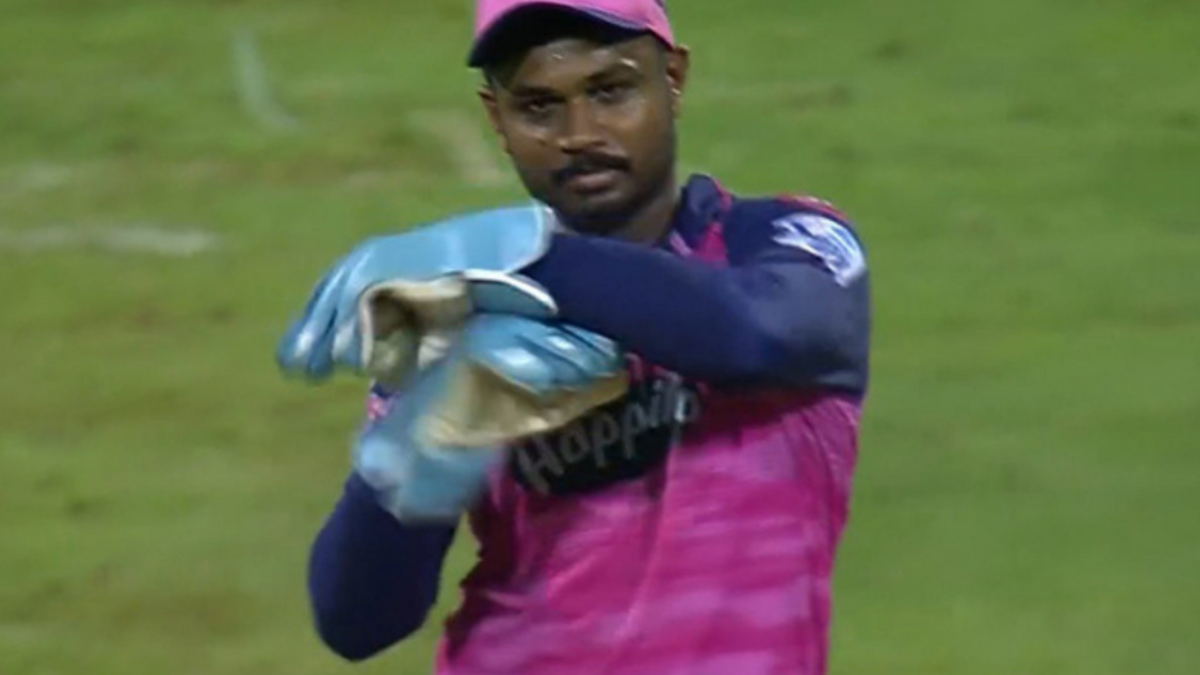
Following a debatable wide call, Rajasthan Royals’ captain Sanju Samson called for a review for caught behind in a move interpreted by many as a protest against the umpire’s decision to call the delivery a wide.
Sign up to bet365 across the IPL, to be entered into a draw for the chance to win a Wisden poster of your choice, terms and conditions apply, more information here. 18+ begambleaware.org
But what are exactly the rules around this issue, and should they be changed?
With Gujurat Titans needing 10 runs off nine balls, Rajasthan Royals’ Prasidh Krishna bowled to Rinku Singh who moved well across his stumps before attempting to uppercut the ball over third man. A wide was called, the second tight call that had gone against Rajasthan Royals in the over, following which captain and wicketkeeper Sanju Samson called for a review, seemingly querying the wide call.
Wides are not currently able to be reviewed, so instead Samson asked to to check on a potential caught behind, despite the ball not passing near the bat.
When can wides be overturned?
There are occasions when, after a review, a wide can be revoked, but only under certain circumstances. For instance, had the replay of Kirhsna’s delivery to Singh shown that there had been “contact between the ball and the striker’s bat or person before the ball comes into contact with any fielder”, the wide would have been rescinded. This is more likely to come into play with leg-side wides, where a review might reveal the ball has hit the batter’s clothing rather than their bat. Similarly, had it been discovered that the delivery was in fact a no-ball, the wide call would have been overturned, as a no-ball over-rides a wide (Laws 22.3.1 & 22.3.2).
Part of the complications over what is and isn’t considered a wide is the often-subjective nature of the decision. For instance, the playing conditions make clear that the wide lines on the pitch are to be considered a guidelines as opposed to a strict rule.
The IPL playing conditions state that, “the umpire shall not adjudge a delivery as being a wide, if the striker, by moving, either causes the ball to pass wide of him, as defined in clause 22.1.2 or brings the ball sufficiently within reach to be able to hit it by means of a normal cricket stroke”.
The conditions also make clear that the umpires are instructed to apply very strict and consistent interpretation of this clause in order to prevent negative bowling wide of the wicket.
What do people want to happen?
Former New Zealand captain and RCB coach Daniel Vettori called for a change to the DRS protocols, allowing players to review any umpiring decision, rather than just wickets. “I don’t think there was any thought of it actually being out,” Vettori said of Samson’s review. “Absolutely [players should be allowed to review wides]. The players should be able to decide in such crucial matters.
“We have sat here so many times and seen decisions go against bowlers that are so close and the umpire has got it wrong. So therefore the players should have some avenues towards rectifying those mistakes. That’s why DRS was brought in: to rectify mistakes. I would like to see that happen. And players are very good judges of that. They get it right more often than not.”
However, respected Indian commentator Harsha Bhogle defended the IPL’s umpires, and suggested that allowing reviews for any decision would lengthen games considerably.
There have been a lot of comments on no-balls and wides on my timeline. I would urge most of you to do a simple search for the laws and you would discover that the umpires have been more right than wrong. And if we start referring everything, we will have 5 hour games!
— Harsha Bhogle (@bhogleharsha) May 3, 2022
The topic of whether wides should be able to to reviewed has been a subject of debate for a number of years, with Jofra Archer asking during the Super Over of the 2019 Cricket World Cup Final whether it was possible to review a wide decision that he believed had been wrongly called against him.
How is the wide law changing?
Increased leniency for bowlers is being introduced in October of this year in the judging of a wide, to aid bowlers as batters increasingly shimmy and threaten a change in feet position before a ball is bowled. Now, a batter’s position will include where they have stood at any point during a bowler’s run-up, as well as where they are standing at the point of delivery. This means that, if a bowler steps outside leg-stump, before stepping back in when the ball is bowled, a ball which passes down the leg-side but would have hit the batter when he stepped outside leg should not be called wide.








